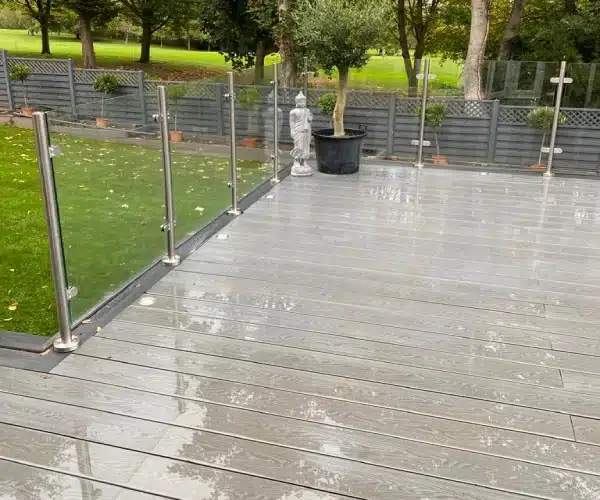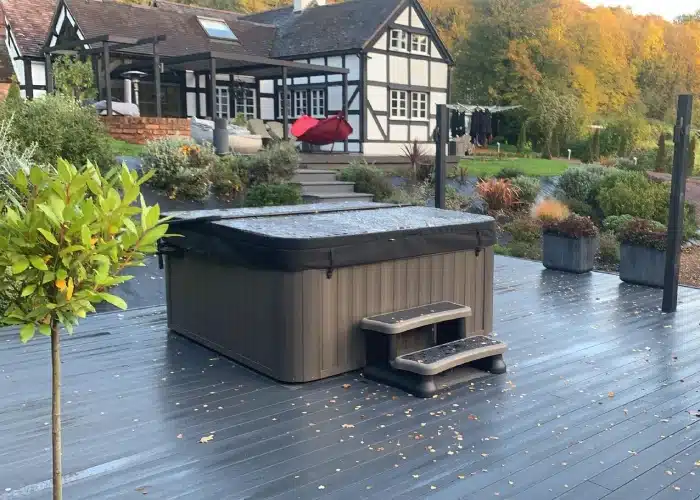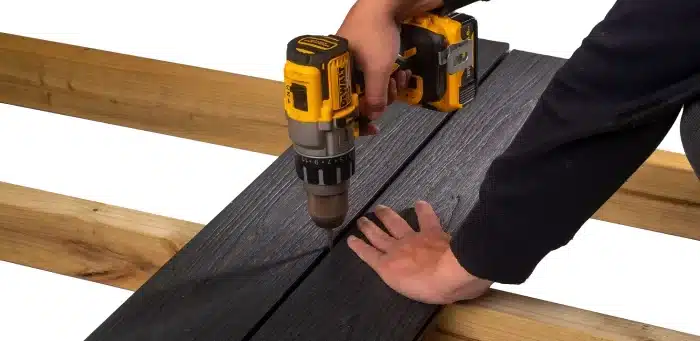Is Composite Decking Reversible?
Why Do Decking Boards Become Swollen?
Decking boards become swollen due to moisture and temperature. The boards absorb moisture, causing them to swell. Wooden decking boards are the most susceptible to swelling. When the expansion of the board is too much, it can warp the boards. After swelling, most decking boards will shrink after they dry out.
Why is this an issue?
The movement of the boards can damage the decking if they absorb too much moisture. This will most often lead to warping, bending, or splitting. The constant contraction and expansion over time can also loosen screws and clips that secure the boards in place. This can be dangerous when using the decking barefoot, leading to cuts and accidents.

Do Composite Decking Boards Swell?
As previously mentioned, wooden decking boards are the most susceptible to constant swelling and shrinkage. How about composite decking boards? Do they become swollen?
Composites or, more accurately, wood plastic composites (WPC), do swell. However, the amount of moisture they absorb compared to wooden decking boards is considerably less. Because of their construction, they are more resistant to swelling but that does not mean that they do not swell at all.
Composite decking boards contain wood fibres mixed with recycled plastics during their production. Given their method of production, any swelling experienced with composite decking boards is generally uninformed along the length and width of the boards. So to summarise, using composite decking is an excellent choice if you are planning to build decking and are concerned about swelling.
However, you should remember that not all composites are the same. Some are more resistant than others. The best composites are capped or shielded co-extrusion decking boards that will absorb less than 1% moisture, even when submerged in water for a month. Others may absorb twice or three times that amount.
For best results, you may want to use capped composite decking boards for extra protection.
Board Spacing
When composite decking is widely spaced by leaving room at installations, no matter how small, it opens a window for moisture to gain access. Composite decking is manufactured from wood, which means it can absorb water, although not easily. Even with a low moisture-absorbent rate, if small spaces or no spaces are left between the boards, water can get trapped around the decking, this in turn will take longer to dry up and can course water pooling. Spacing is important to support drainage, along with airflow and ventilation and if not correctly spaced even composite decking boards will eventually swell.
Water Absorption
Composite decking comes at different prices, and its quality can be assessed through the price of a product. When considering durability and the advantages of installing composite decking, you should go for the best quality. The type of composite decking determines the rate of moisture absorption; for example, uncapped composite decking will absorb more water than capped composite boards, as previously mentioned.
As composite decking absorbs water, it will undergo a natural drying process over time. Likewise, wood, when exposed to moisture, tends to swell and expand in size. To decrease the amount of swelling, you can opt for composite decking with a higher proportion of plastic and less wood content, for example a capped boards with a PE surface layer.
How to fix swollen decking board
The only way to fix swollen wood or composite boards is by air-drying them. Moisture will leave the boards and return them to their original size. However, there is not much you can do if wooden decking boards are warped beyond repair. The best thing to do is to replace them with new boards.
As for composites, some of them are resistant to warping and bending. They will return to their original size eventually. You may also need to re-attach some clips or screws that became loose due to the movement of the boards. Swelling is a huge problem for decking owners.
As mentioned, there is little you can do to fix boards that are too affected by the swelling. If that is the case, the only way to fix it is to remove the boards and replace them with new ones. However, there are many ways to prevent this problem from occurring. Doing so will save you time, money, and materials.
For wood, you will need to purchase a sealant to prevent moisture from entering the boards. You will need to reapply sealants every few years since the sealant wears off over time. However, if you are using composite decking boards to build decking, you do not need to do anything to the boards.
As previously mentioned, while they swell, they are resistant to warping, especially capped composites. During the installation, there are also things that you can do to minimise the damage done by swelling, ensure the correct gradient and spaces for drainage are left and do regular check for any water holding on your deck. For both composites and wood, you would need to air-dry them first so that they will return to their original size before installation.
Remember you will also need to consider proper decking board spacing. If you install the boards too close to each other, the boards may swell and create friction. The boards can lift away from the subframe, making the decking uneven underfoot, which can lead to accidents. The amount of spacing needed depends on the materials being used.
To know the exact details on board spacing, you can refer to the manufacturer’s installation guides or talk to them directly for help and advice on the recommended spacing of their composite decking boards. Please note as rule of thumb 3mm side to side and 6mm end to end.
Conclusion
Decking boards that are prone to moisture absorption and will swell over time, creating issues such as warping and other safety issues. While wood is highly affected, second generation composite decking boards with minimal moisture absorption are an excellent choice to prevent swelling. The only way you can “fix” swollen decking is by letting it naturally dry out over time. There are some incidents where the damage that has been caused by swelling is irreversible. It is always best to prevent excessive swelling rather than try to reverse it.
Can You Screw Down Composite Decking




